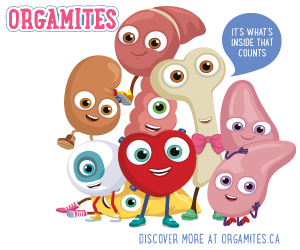In Canada, the drug toxicity crisis has claimed at least 38,514 lives since 2016. Between January and March of this year, a total of 1,904 people died from opioid poisoning. That’s an average of 21 lives lost each day in the first three months of 2023. Additionally, HIV has been steadily rising in Canada alongside other sexually transmitted infections (STIs), including chlamydia, gonorrhea and syphilis, particularly among youth – with people under the age of 29 making up more than one-quarter of all new HIV cases in Canada as of 2021. The drug toxicity crisis, rising rates of STIs among youth, and a growing concern of youth mental health show that there is a clear need for harm reduction education, approaches and services across the country, particularly for youth.
Harm reduction is a set of guiding principles aimed at reducing the harms associated with certain activities, such as substance use and sex. Often, these two activities have a moral framing around them, as if people who engage in these practices are doing something “wrong” or “bad.” This leads to a culture of shame and stigma around sex and substance use, creating barriers for people, especially youth, who engage in these activities to access health services and social supports. This isolation becomes even more pronounced for queer youth who experience discrimination and exclusion based on their gender identity, gender expression, or sexuality.
Harm reduction approaches to sexual health education and substance use can effectively engage youth in open, honest and non-judgmental conversations about sexual health, STI prevention, and substance use risk mitigation. By using an approach that meets people where they’re at in their own journeys, harm reduction recognizes that abstinence may not always be possible nor the best option for everyone, and instead, provides a set of practical strategies that can help reduce the negative consequences associated with various behaviours.
For example, harm reduction tips in substance use may sound like, “Start low and go slow”—which highlights that one can always increase their dose but cannot go back—encouraging people to use smaller amounts of a substance to first gage their effects and to minimize the chances of an overdose.
Since many substances, especially powder drugs, can be cut or contaminated with other substances, like fentanyl (which can increase the chances of an accidental overdose), carrying Naloxone is another harm reduction tip for people who use unregulated drugs. Knowing how to use Naloxone can save a life and temporarily reverse the effects of an opioid overdose. Other harm reduction tips include not using alone, checking your drugs at a safer consumption site or with fentanyl test strips before using, planning your night out beforehand, setting limits on your use, not mixing substances (or checking a drug interaction chart beforehand), and only using your own drug equipment.
These same principles of harm reduction can also be applied to sexual health education. For example, one of the harms associated with sex is the chance of getting or passing on an STI. Often, STIs have no symptoms, making routine testing an important part of someone’s sexual health regimen. Other harm reduction strategies around sex may include using condoms, dental dams for oral sex, getting tested before or in between new sexual partners, talking about your STI status with new partners, learning how to set boundaries and normalize conversations around safer sex, knowing about and taking preventative medications like birth control or PrEP—pre-exposure prophylaxis, a prescribed HIV prevention medication, using lubricant to reduce the likelihood of tears, and taking anti-retroviral medications (ART) to keep HIV undetectable (and therefore, untransmittable).
As counsellors, combatting stigma around sex and substance use for youth is crucial to reducing the harms that may be associated with these activities. Providing a welcoming, non-judgmental space for youth to discuss their concerns can reduce feelings of shame or isolation that may come with these practices and that may be preventing people from accessing the care and services that they need.
The lack of comprehensive sexual health and harm reduction education and resources in Canada leads youth turning to peers, and often, other non-verified sources (either IRL or online) for information on safer sex and safer substance use. As a response, the Canadian Foundation for AIDS Research (CANFAR) launched a nationwide survey among youth ages 12 to 25 in 2019 to gain perspectives on youth’s needs around sexual health and harm reduction education, including their knowledge on HIV and other STIs, as well as their experiences with mental health.
Findings from the research revealed the interconnectedness of sexual health, mental health and harm reduction, with the majority of participants expressing a strong desire for more education on other issues that are important to youth, such as healthy relationships. In response to these findings, CANFAR collaborated with youth across Canada to create Sexfluent.ca, an online resource developed by and for youth.
Sexfluent provides youth with an inclusive, sex-positive and safer space to discover and explore topics around sexual health, mental health, gender identity and sexuality, and harm reduction. Addressing a wide array of topics including modern sex and dating, sexual health and boundary setting, healthy relationships and communication, mental health and healing, as well as substance use and overdose prevention, Sexfluent engages youth in conversations about safer sex, pleasure, boundaries, porn, HIV and STI prevention, testing, and harm reduction in destigmatizing and accessible ways.
Sexfluent ultimately aims to transform the conversation around sexual health to be free of judgment and shame, so that youth can embark on their own journeys of self-exploration and decide what methods work best for them to prevent HIV and practice safer sex and safer substance use. By using a harm reduction approach to all its themes, Sexfluent has seen immense success in engaging youth around stigmatized topics and increasing access to valuable information for youth.
Sexfluent.ca is a free online resource and platform for youth to access, and CANFAR provides educators across Canada with free educational materials on sexual health and healthy relationships, including comprehensive lesson plans for grades 7 to 12, posters, postcards, resource cards, and more. To learn more and place an order for free resources, visit CANFAR.com/classroom and share Sexfluent.ca with the youth you work with.
By: Roxanne Ma and Marc Giuliani









